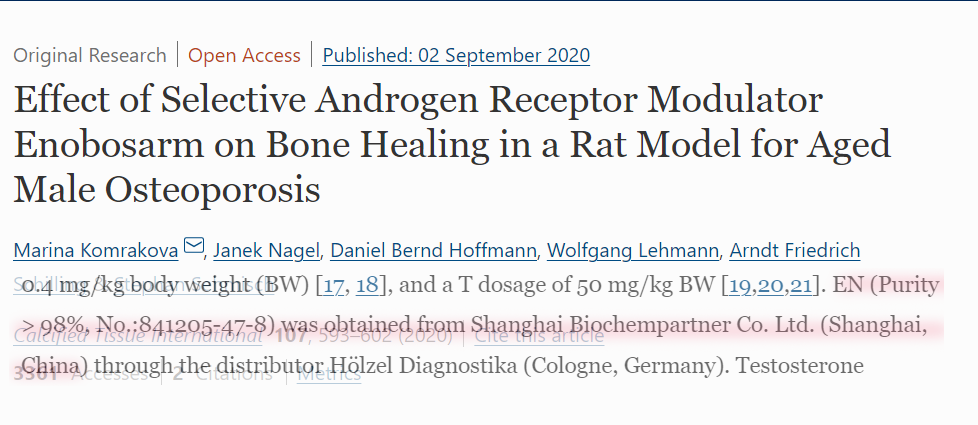Effect of Selective Androgen Receptor Modulator Enobosarm on Bone Healing in a Rat Model for Aged Male Osteoporosis

Abstract Enobosarm (ostarine, MK-2866, or GTx-024) is a non-steroidal selective androgen receptor modulator. This study evaluated the effect of various regimens of enobosarm (EN) on bone healing in an orchiectomized rat model for aged male osteoporosis and compared it to testosterone (T) treatment. Ninety eight-month-old male Sprague Dawley rats were either orchiectomized (Orx) or left intact (Non-Orx) and divided into groups (n = 15/group): (1) Non-Orx; (2) Orx; (3) Orx+T-th; (4) Orx+EN-th; (5) Orx+T-pr; and (6) Orx+EN-pr. Prophylaxis (Pr) treatments were applied immediately after Orx for up to 18 weeks. Therapy (Th) treatments were applied 12 weeks after Orx for up to 6 weeks. Bilateral tibia osteotomy with plate osteosynthesis was performed 12 weeks after Orx in all groups. EN and T were mixed with the diet; the daily dosage was 0.35 ± 0.06 and 41 ± 8 mg/kg BW, respectively. Both T treatments improved bone healing by increasing callus volume and area, bone volume and density, and cortical width; they had no effect on prostate or levator ani weight. EN-pr increased the callus area and callus density and decreased cortical density, but increased prostate weight. The effect of T-pr and T-th on bone was stronger than EN-pr. EN-th affected bone healing negatively by reducing callus density and area and delaying osteotomy bridging. Levator ani weight was increased in both EN groups. EN treatment after fracture is not advisable in aged males. EN-pr treatment as a therapy for bone healing in men could be further investigated; endocrinological side effects must be closely monitored.




